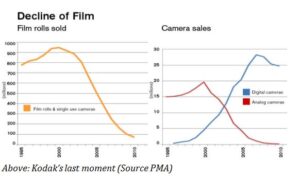How can organisations proactively look forward to identify future opportunities and threats? This series of five short think pieces examines some of the key ways that organisations can reduce the level of uncertainty surrounding what’s next.
#3: Groupthink. The good, the bad and the unexpected
Author: Richard Watson

In 2013, a study in the US called the Good Judgement Project asked 20,000 people to forecast a series of geopolitical events. One of their findings was that an understanding of the natural human biases referred to in the previous post resulted in better predictions. An understanding of probabilities was also shown to be of benefit as was working as part of a team where a broad range of options and opinions were discussed. You have to be aware of another bias – Groupthink – in this context, but as long as you are aware of the negative power of consensus you can at least work to accentuate it’s more positive aspects.
Being aware of how people relate to one another also brings to mind the thought that being a good forecaster doesn’t only mean being good at forecasts. Forecasts are no good unless someone is listening and is prepared to take action.
Thinking about who is and who is not invested in certain outcomes – especially the status quo – can improve the odds when it comes to being heard. What you say is important, but so too is whom you speak to and how you illustrate your argument, especially in organisations that are more aligned to the world as it is than the world as it could become.
Steve Sasson, the Kodak engineer who invented the world’s first digital camera in 1975 showed his invention to Kodak’s management and their reaction was: ‘That’s cute, but don’t tell anyone.”
Eventually Kodak commissioned research, the conclusion of which was that digital photography could be disruptive. However it also said that Kodak would have a decade to prepare for any transition. This was all Kodak needed to hear to ignore it. It wasn’t digital photography per se that killed Kodak, but the emergence of photo sharing and of groupthink that equated photography with printing, but the end result was much the same.

Good forecasters are good at getting other peoples’ attention through the use of narratives or visual representations. Just look at the power of science fiction, especially movies, versus that of white papers or power point presentations.
If the engineers at Kodak had persisted, or had brought to life changing customer attitudes and unexpected behaviours through the use of vivid storytelling – or perhaps through the use of Kodak photographs or film – things might have developed rather differently.
Next post: Find out what you don’t know
This post was written by Richard Watson, who works with the Technology Foresight Practice at Imperial College.


